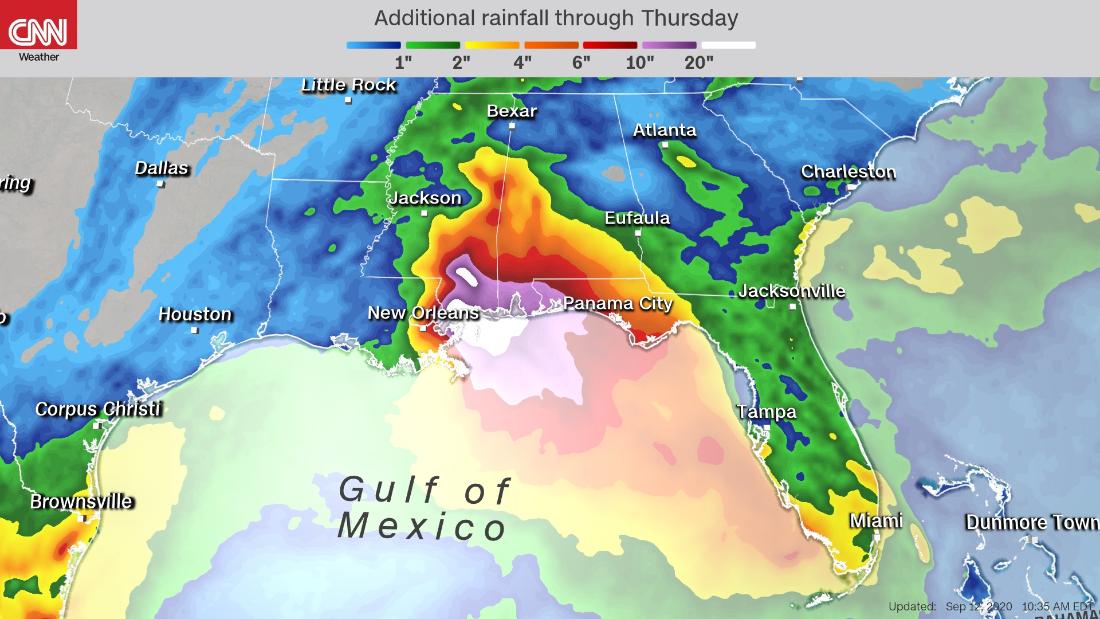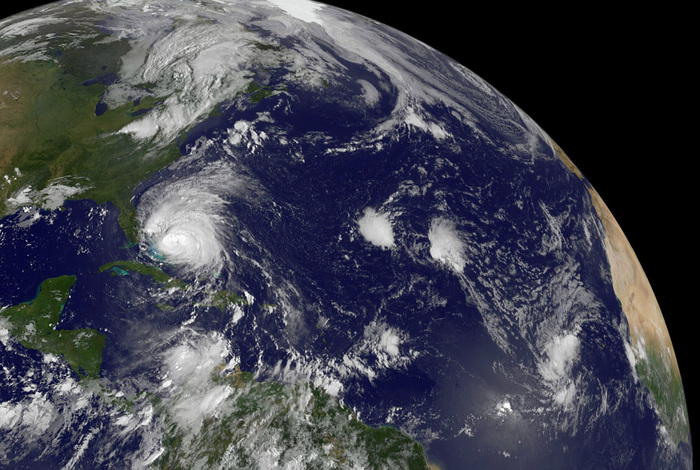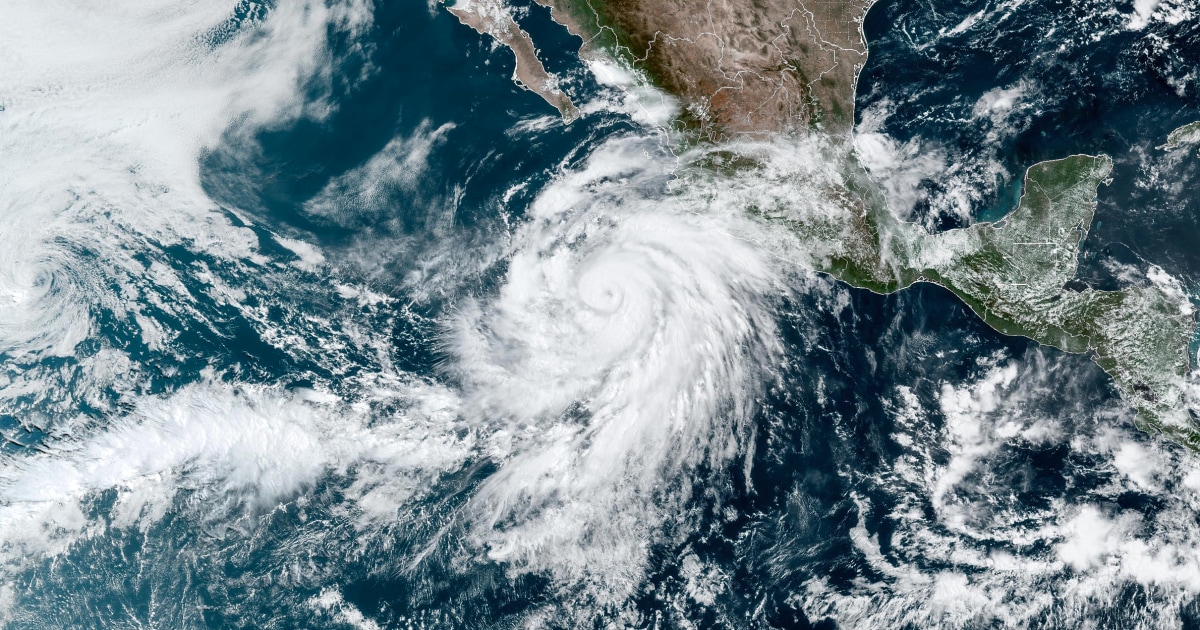Hurricane Laura's devastation remains in Louisiana 3:32
(CNN) -
Tropical Storm Sally is now the eighteenth named storm of the 2020 Atlantic hurricane season.
Sally - also the 18th earliest named storm on record - already brought heavy rain and gusts of wind to Florida on Saturday as the storm moved into the Gulf of Mexico.
Flood alerts are in effect through Sunday for areas of Florida's west coast, including Tampa, Bradenton, Port Charlotte and Fort Myers.
In these areas, 2 to 4 inches of rain is expected over the weekend.
Hurricane and tropical storm warnings have already been issued along the Gulf Coast from Louisiana to Florida Territory.
Most forecast models show Sally moving north of the Gulf Coast and probably making landfall somewhere between New Orleans and Panama City (Florida) late on Monday or Tuesday, however, if the runway moves further west or slows down, landfall may be delayed until Wednesday.
"The cyclone is likely to become a hurricane in 2-3 days, although an increase in vertical shear could decrease the rate of intensification in the northern Gulf of Mexico," according to the National Hurricane Center (NHC, for its acronym) in English).
Once it reaches that area of the Gulf Coast, the steering patterns break and the system snakes close to shore.
Whether the meander is offshore before making landfall or on land will not make much of a difference in terms of rainfall.
In any case, due to the slow progress along the Gulf Coast, significant flooding is possible.
At this time, widespread 4- to 6-inch rains are likely to accumulate.
However, there will be isolated areas along the coast that could collect more than 2 centimeters of rain.
It is already an active season
So far this season, 18 named storms have been seen.
The average for a full season is 12. Earlier in the season, tipsters called for a very active season.
Many storms broke records for being the first named to date, including Cristóbal which was the earliest storm with the letter "C" recorded in history and Hanna, which was the earliest storm with the letter "H".
All but three named storms (Arthur, Bertha, and Dolly) set records for being the earliest named storm for their respective letter.
Sally is just one of several systems in the Atlantic.
The NHC currently observes six areas: two tropical storms, two tropical depressions, and two tropical disturbances.
Thursday marked the peak of the Atlantic hurricane season.
MORE: Tropical Storms Paulette and Rene Form, Continuing Extremely Active 2020 Hurricane Season
"Tropical Storm Paulette is forecast to become a hurricane today," says Haley Brink, a CNN meteorologist.
“Paulette is forecast to head into Bermuda and possibly make landfall early Monday morning as a Category 2 storm. There is a hurricane watch for Bermuda with possible hurricane conditions within 48 hours.
Tropical storm conditions will begin to affect Bermuda on Sunday afternoon and hurricane conditions will begin Sunday night.
Another system to watch is a large low-pressure area to the southwest of the Cape Verde Islands.
This system is now Tropical Depression 20. After Sally, only three names remain on this year's official list: Teddy, Vicky, and Wilfred.
After that, the NHC will switch to the Greek alphabet.
La Niña is officially here
On Thursday, the National Oceanic and Atmospheric Administration announced that it will issue a La Niña advisory, which means that La Niña conditions are present in the central and eastern Pacific Ocean.
In a typical El Niño phase, much of the Pacific Ocean is characterized by warmer waters, while La Niña presents a cooling of those same Pacific waters.
In the case of hurricanes, La Niña weakens strong atmospheric winds, allowing pockets of hot air to grow vertically and become hurricanes.
Tropical storm





/cloudfront-eu-central-1.images.arcpublishing.com/prisa/KBZLUQ5BWNBNBFOHTOUOOJ3KUI.jpg)


